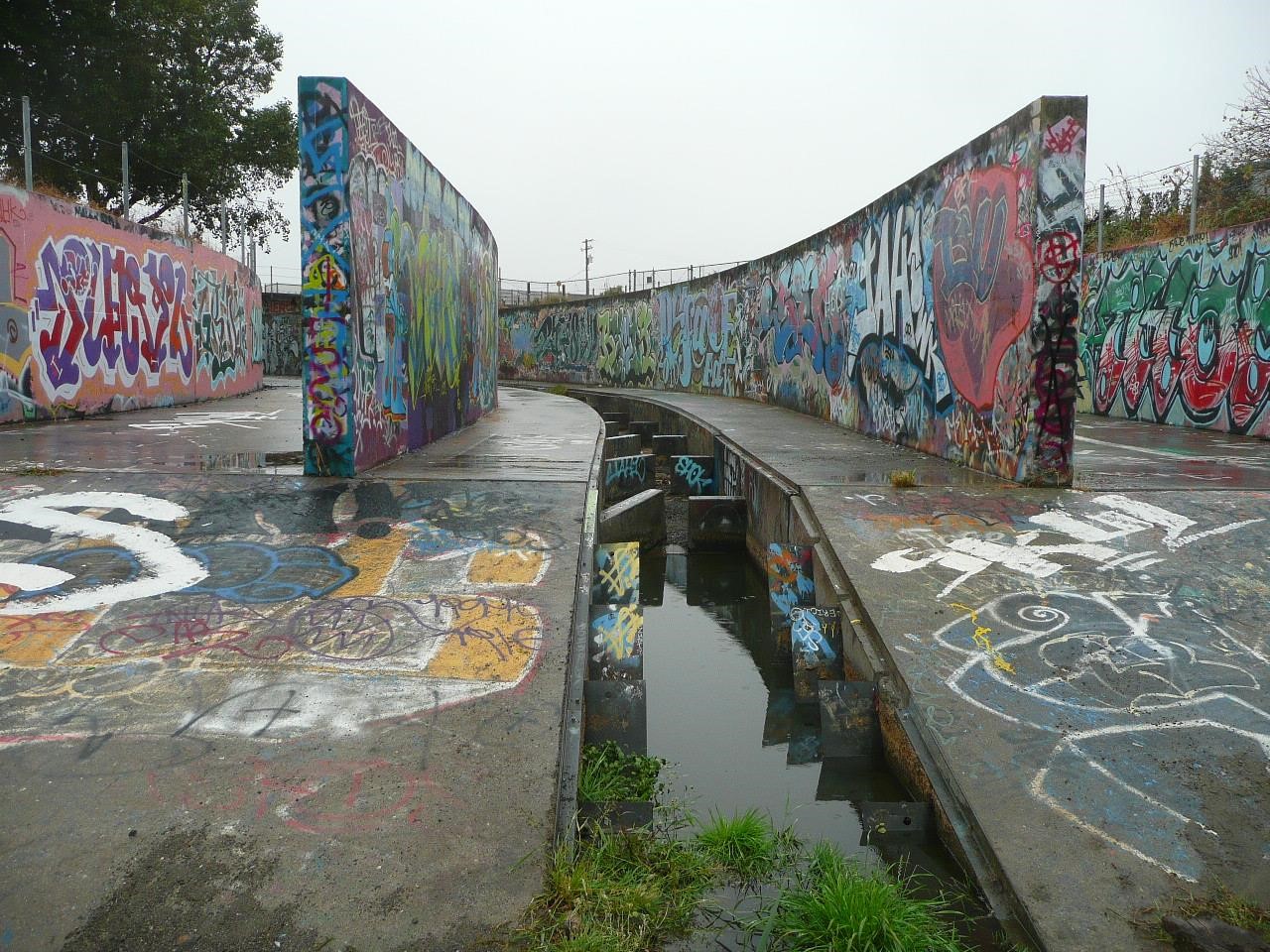
The primary goal of the overall project is to replace a failed fish passage facility constructed in the mid 1990s by the U.S. Army Corps of Engineers (USACE). This facility represents the most downstream of the three significant barriers to Central California Coast Steelhead (CCCS) migration in Lower Wildcat Creek. Once prolific in their distribution throughout this region, it is estimated that current populations are less than 10% of historical estimates, and the California Department of Fish & Wildlife has not documented CCCS spawning in the San Francisco Bay watershed since the current drought began in 2012. As such, this distinct population segment has been designated as a threatened species under the Endangered Species Act (ESA).
The fish passage structure slated to be remediated through this project was developed for adult steelhead and rainbow trout is subject to clogging with sediment and debris which further adversely affects the passability of this structure. Remediating this barrier will result in the restoration of 1.125 stream miles and 13 acres of habitat helping to reconnect the headwaters of Wildcat Creek with San Francisco Bay and provide additional spawning and rearing habitat for steelhead and other anadromous fish, and potentially restore steelhead in the creek. This project will develop final designs for the fish passage facility and obtain the permits necessary to reevaluate the USACE/NHC design to enable the project to move forward. The California Department of Water Resources (CDWR) supports the project and has committed the remaining funding needed for the 100% designs.
Led by the Watershed Project, Trout Unlimited and FlowWest, the project will involve coordination amongst USACE, CDWR, and the Contra Costa Flood Control and Water Conservation District in developing and permitting an effective replacement fish passage facility. This project leverages funding from the CDWR Urban Stream Restoration Program and the California Fish Passage Forum. Community outreach and education is a critical element in the success of this project.
Human Interest/Community Benefit:
Located in a disadvantaged community, the remediation of this fish passage barrier has already garnered considerable public support. The community is also simultaneously undertaking a stream trail enhancement effort on Wildcat Creek that increases access, awareness, and understanding of the issues addressed by remediating the fish passage barrier. In a recent outreach effort to determine community spending priorities on water-related projects, 65% of North Richmond community members described the fish ladder retrofit as “definitely needed” or “most urgently needed”. Nearly half of community members listed the fish passage project as being one of their top five most important projects in North Richmond. Community members value habitat restoration projects that provide benefits to wildlife but have also expressed a strong desire for community education to accompany such projects, especially programs designed to introduce children to new experiences and knowledge.
Based on this feedback and recognizing that community outreach and education is a critical elements in the success of this project, associated outreach deliverables include K-12 educational programming development of a children’s storybook specific to this project and that will be available in print and digital formats, a community facing web page, and presentations at community meetings.
To develop the K-12 educational programming, the Watershed Project will partner with teachers from at least one of the nearby elementary schools to deliver their “Me & My Watershed: Creekside Program”. Through this eight-lesson curriculum, students will gain a foundational understanding of what a watershed is, how they are connected to the local watershed and the importance of creek health. The format of lessons will be flexible, dependent on any applicable COVID-19 restrictions, and may include a combination of live video lessons, online student-directed assignments, and physical curriculum kits, including handouts and other materials. In accordance with school district health guidelines, programming will include socially-distant in-person lessons outdoors and a visit to the fish passage facility.
The children’s storybook developed through this project will be a collaboration of local artists, indigenous community leaders, and other partners. Appropriate for ages nine and up, the storybook will illustrate the importance of connectivity in the context of the overall watershed, how stream conditions change from the headwaters to the bay, and what they hope to accomplish by retrofitting the fish passage barrier. A print-friendly version of the book will be available at no cost on the project’s website.
Upon completion of design plans for the fish passage remediation, the Watershed Project and FlowWest will present information about the project and design plans to community members and stakeholders at 2-3 community meetings.
Project Timeline:
January 2022 – December 2023
Partners:
The Watershed Project (lead)
Trout Unlimited
FlowWest Consultants
Contra Costa Flood Control and Water Conservation District
Trout Unlimited
FlowWest Consultants
Wildcat-San Pablo Creeks Watershed Council
California Department of Water Resources
